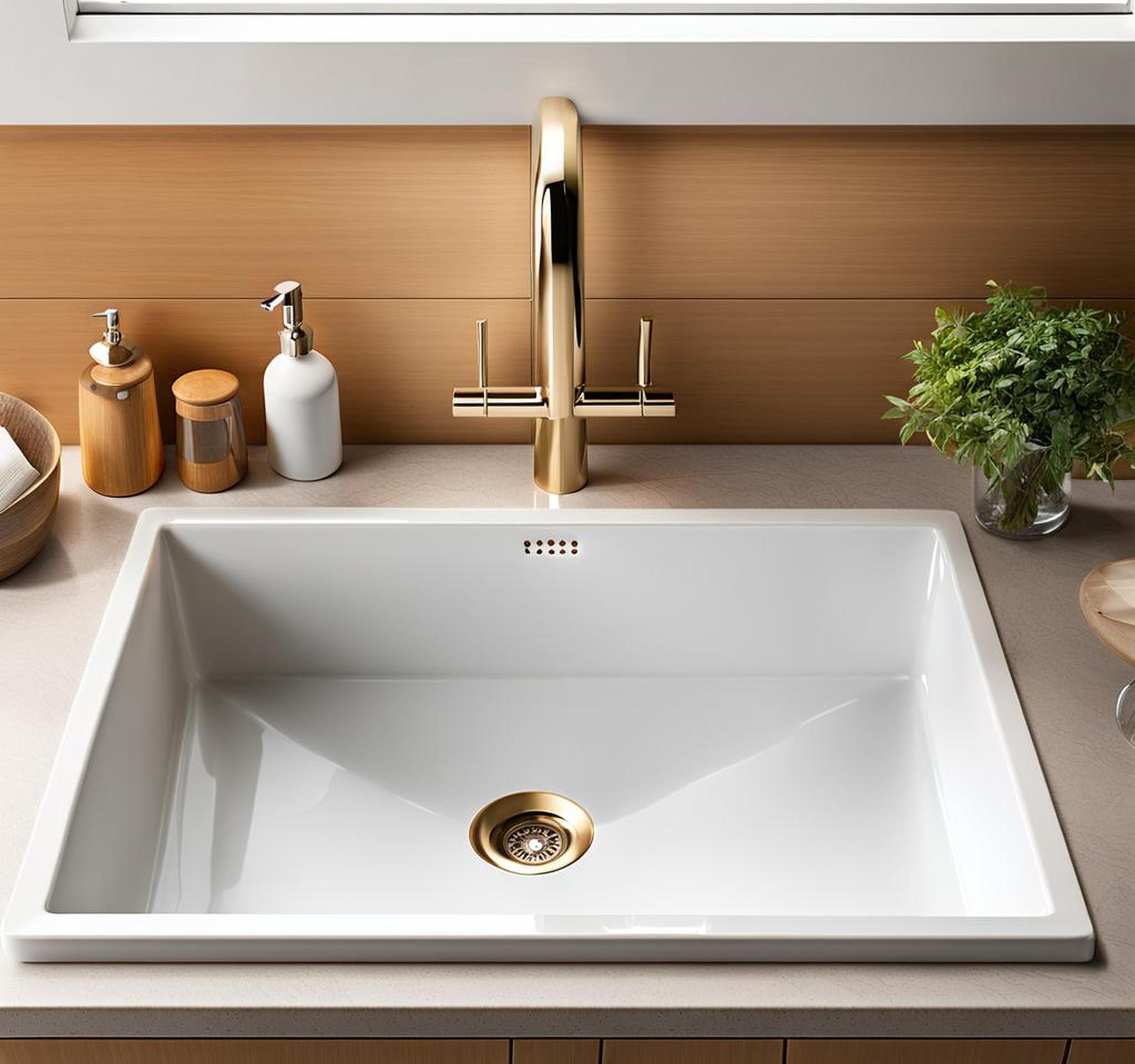When choosing a new sink for the kitchen or bathroom, homeowners face an important decision – whether to select ceramic or porcelain. Both materials have unique properties to consider regarding durability, scratch resistance, stain resistance, style options, and budget.
We’ll examine the manufacturing process behind each material, analyze scratch and stain vulnerabilities, explore style and design differences, and evaluate costs. With the full picture, you can determine whether durable porcelain or customizable ceramic makes the best fit for your space and priorities.
Durability Comparison
For a sink material to withstand daily use, drops of heavy cookware, and minor impacts, durability is essential. Porcelain and ceramic sinks vary in sturdiness:
Porcelain Manufacturing Process
Porcelain production involves extremely high-temperature kiln firing, ranging from 1200degC to 1400degC. This intense heating followed by careful cooling and annealing makes porcelain less prone to cracks, chips, and breaks during regular use. The rugged material can better handle dropped kitchen items and swinging bathroom doors.
Ceramic Fragility and Chipping Risk
Ceramic sinks undergo lower temperature firing during manufacturing, typically less than 1200degC. As a result, ceramic has a more porous surface and tends to chip or crack more easily than porcelain when subjected to impact from cookware or appliances. Over time with heavy use, ceramic sinks develop small fractures and flaws.

Scratch Resistance
An extremely hard, nonporous surface enables porcelain sinks to better resist minor abrasions from daily cleaning routines, dropped silverware, and components on bottom of cookware. Ceramic’s more porous composition slowly shows evidence of small scratches over time.
Stain Resistance
When spills, cleaning products, soaps, and water splatter occur regularly, a sink’s ability to resist stains is valuable. Porcelain’s tightly sealed smooth surface prevents stains from fully adhering or penetrating the material. liquids. Soils and spills are less likely to permanently adhere. With slight porosity, ceramic may slowly allow some staining over time.
Style and Design Options
While durability differs between porcelain and ceramic sinks, design flexibility and aesthetics also set the two materials apart:
Ceramic Design Versatility
Glazes applied to ceramic allow for vibrant colors from cool greys to dramatic dark hues and warm neutrals. Glossy or matte textures influence the look. Impressive patterns, shapes like rectangles or curves, and drainage configurations suit range of decor styles.
Porcelain Aesthetic
Porcelain sinks are typically only available in classic crisp white due to the material composition and high-temperature kiln firing technique. The consistent glossy white color pairs well with both modern and traditional bathrooms but offers less versatility.
Costs and Budget
In addition to performance and style differences, porcelain and ceramic sinks represent different budget investments:
Ceramic Affordability
As a very approachable material option for sinks, ceramic offers great durability for the lower cost. Attractive ceramic sinks are available to meet limited budgets. Lower material expenses and simpler manufacturing processes reduce overall costs passed onto consumers.
Porcelain Expenses
The intensive extreme kiln-firing needed for porcelain increases manufacturing expenses, making porcelain sinks a more expensive sink choice overall. But consumers receive a highly durable product in return for the premium investment.
Making the Ceramic vs Porcelain Decision
With detailed comparisons now in hand, choosing between ceramic and porcelain requires evaluation of your priorities:
- Is maximizing long-term durability most important?
- Do you prefer open-ended design flexibility over pure functionality?
- What degree of stain resistance is needed for your household?
- Does affordability play a restricting factor in your sink budget?
Also factor in the sink’s location and expected usage levels. For example, busy family kitchens demand indestructible materials like porcelain. Interior design lovers can showcase ceramic’s colorful charm in lightly used powder room sinks.
Heat Resistance
While both porcelain and ceramic sinks can handle hot and cold temperatures, porcelain sinks are better at withstanding sudden temperature changes. This is because porcelain has a lower coefficient of thermal expansion, which means it doesn’t crack or warp as easily as ceramic when exposed to sudden temperature shifts.
Environmental Impact
Porcelain sinks are often made from non-renewable resources such as clay and feldspar, which can have a negative impact on the environment. Ceramic sinks, on the other hand, can be made from recycled materials, making them a more eco-friendly option.
Texture
Porcelain sinks have a smooth, glossy finish that is easy to clean but can be slippery when wet. Ceramic sinks, on the other hand, can be textured to provide a non-slip surface, making them a safer option in areas with high moisture levels.
Installation
Porcelain sinks are typically heavier and more difficult to install than ceramic sinks. Ceramic sinks are lighter and can be easier to install, especially in smaller bathrooms.
With all factors weighed, porcelain generally provides supreme durability and stain protection, while ceramic excels at style customization and affordability. Define priorities around budget, design freedom, household usage, and maintenance convenience. Then select the best sink material equipped for your home’s needs.
By understanding the manufacturing processes, vulnerabilities, and benefits behind ceramic vs porcelain sinks, the choice becomes clear. Confidently move ahead with a material aligned with both practical needs and personal preferences.
